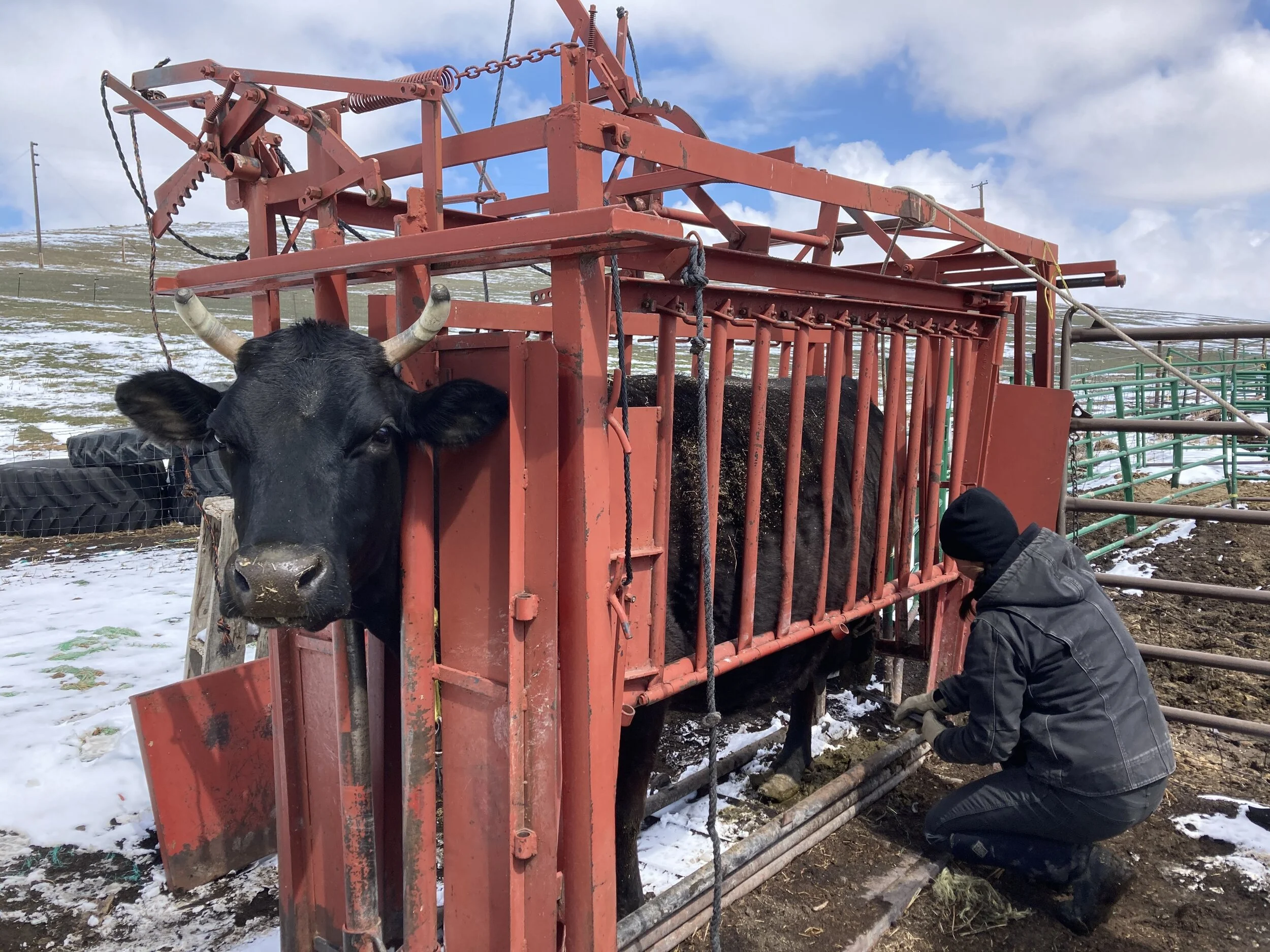Milk Cow Needs
One of the biggest personalities on the ranch, among many, is my milk cow, Maija.
Maija never hurries.
She goes exactly where she wants to go.
She refuses to be herded, but she will follow an alfalfa pellet off the edge of a cliff.
She uses her horns to sort through a bale of hay, scattering thick, unpalatable stems in the wind before she reaches delectable leaves.
The horses in the corral pretend they don’t notice Maija, but they avoid her if possible.
Every time Maija calves, she develops mastitis.
Every year, one of the two vets in town recommends selling her.
Obviously, he has never attempted to purchase a productive milk cow.
At least, it is difficult to locate what I consider a productive milk cow.
Others seem to have lower standards.
Craigslist advertises several cows within 400 miles, but when I call to learn more, I find out that this one hasn’t calved for three years. Another gives milk from two quarters instead of four.
Those are not milk cows.
They are culls.
So every spring, as Maija approaches her calving date, I institute a doting regimen of penicillin.
Maija does not like injections.
She does like grain mixed with molasses.
We compromise for a few days.
I bait her into the chute with massive quantities of treats and she allows it.
Once we beat back the mastitis, my single-cow profit center raises two calves and feeds multitudes of orphan lambs.
As a Jersey-Brown Swiss-Holstein cross, Maija has thin skin topped with a thin coat of hair.
As a thick-cream loving, income-maximizing rancher, I want to protect Maija from unrelenting, bone-chilling wind.
Straw bales used to line the north side of her corral.
They disintegrated, burying most of a layer of metal panels with them.
So I planted Russian olives, even watering them during the hot, dry summer.
I might be the only living person who has ever killed a Russian olive tree.
But tires don’t disintegrate or die.
A benevolent stack of old tractor tires is slowly rising from the ancient ruins of straw bales and rusted metal panels, basking in their final role as a windbreak.
Like many cows that usually stand in soft dirt, Maija requires periodic maintenance.
Last winter, I should have purchased a ski pass for her.
Her toes were long enough that I would have saved money on the ski rental.
Instead, I dug around and found a cantilevered pair of horse hoof nippers.
An old calf rope and a half-bucket of molasses-infused grain rounded out my supply list.
Maija followed me into the alley, neck stretched toward the bucket, mouth gaping.
When I let her have a bite, she buried the bucket in the dirt trying to reach the bottom.
Maija and I have the same opinion of pedicures.
It might look pretty in the end, but some of those beauty regimens could moonlight as torture techniques.
My brother, Roger, wrapped the other end of Maija’s toe rope around the top rail of the chute while I started nipping at Maija’s skis.
It’s easy to see where a toenail ends and nerves begin on a horse or a sheep. Cows are a bit harder.
Especially as they rapid-fire within inches of eyeballs.
I decided this would be a fantastic learning opportunity for the ranch apprentice, Jennifer.
After all, Jennifer wants hands-on experience.
I stood back, way back, and hollered encouragement toward the hind end of the chute.
Maija multitasked, emptying her grain bucket as she tried to kick the nippers through the chute.
And if Jennifer decides to forgo law school, I’m sure she can land a job in a beauty salon.
